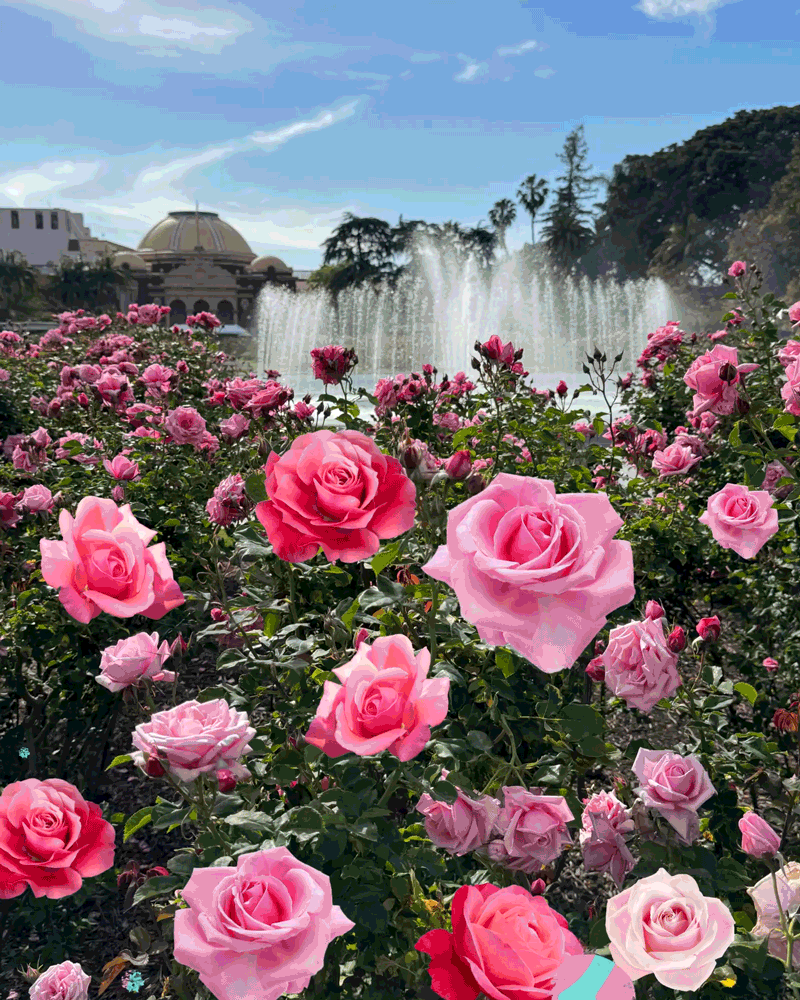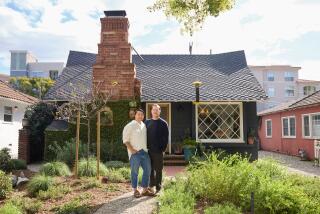Planning Victorian Gardens a Cottage Industry
The riotously diverse Victorian garden isn’t haphazard. It’s not a big weed patch that had the good luck to sprout flowers here and there. It’s radiantly abundant, a feast for the eyes rather than just an appetizer. And, as such, it requires planning.
Nobody knows this better than Audrey Heredia and her daughters, Stephanie and Vivian, who run the show at the McCharles House Restaurant and Tea Room in Tustin. The historic McCharles House was built in the shank of the Victorian era, in 1885, and over the past two years the Heredia family has been assembling a garden to complement it.
The effect, Audrey Heredia said, was intended mainly for customers who arrive for afternoon and evening tea and sit outdoors in the front yard of the house. To take tea under the umbrellas there now means that you are quite surrounded by some of the brightest flora available in this area.
Audrey Heredia calls the effect “whimsical,” a contrast to the more formal atmosphere that comes with dining inside the house.
“The Victorian era is being revived now,” she said, “and this type of cottage garden is one part of that that most anybody can bring back. It is let grow randomly, but it’s planned to look informal.”
A seeming contradiction, yes, but the result helps to clear up confusion: It’s a kind of botanical “Where’s Waldo?” page. “Every area that’s plantable, we’ve planted,” Audrey Heredia said.
And therein lies one of the secrets to the Victorian cottage garden. It can actually be thought of as a kind of extended bouquet of flowers and ancillary plants, Stephanie Heredia said, adding that “what the Victorians liked was color, and more bright colors than pastels. They loved a big mixture.”
Which is exactly what the Heredias have. In the front yard, foxgloves and columbines sprout near an aging honeysuckle plant (“something that was a must” for the essential Victorian garden, Stephanie Heredia said), and impatiens (also big in the Victorian period) bloom near calla lilies and irises. Elsewhere are tiny tea roses, larger roses, cottage hollyhocks, several varieties of scented geraniums and even sunflowers in the back yard and strawberries in window boxes.
Herbaceous plants that were not of woody stock also were widely popular in the Victorian garden, and Stephanie has accented their presence at the McCharles house by planting a small “knot garden” near the curb, with various herbs planted in a knot-like geometric pattern, the only concession to perceivable order in the larger garden. The herbs, she said, were not only prized for their looks, but for their utility in the kitchen.
In a sense, Vivian Heredia said, the entire garden served more than one purpose.
“The gardens complemented the interiors of people’s houses,” she said. “The gardens were thought of as art that you could see from inside the house, and the art of the tea gardens often took precedence even over the tea food that was served.”
And, she said, the gardens could be enjoyed in bloom all year, the result of the Victorians planting annuals and perennials cheek by jowl. Something was always in bloom.
And, occasionally, there was the odd bit of man-made decoration to look at. In the side yard of the McCharles House is a beeskep, or ornamental hive, which was popular a century ago. Bees, Audrey Heredia explained, were highly prized by the gardeners, who would talk to the bees in the belief that if the insects were not spoken to, they would not return. (The McCharles House garden is alive with pollinating bumblebees that, she assures, will not sting.)
Still, the garden was meant to be relentlessly natural, with few adornments other than the plants themselves. Even plants that had to be staked were tied to small sticks of bamboo.
Not that the Victorians were entirely opposed to the encroachment of technology. According to Audrey, the proliferation of cottage gardens spurred the development of those two mainstays of modern suburban labor: the garden hose and the lawn mower.
And, she added, the old gardens were also responsible for the development of seed companies, which eagerly offered the Victorian gardener an ever-broadening choice of bright colors. Today’s seed companies, she said, are beginning to pay homage to that legacy by packaging their seeds in envelopes that are printed with a decidedly busy Victorian image.
They really are pretty. But I couldn’t find Waldo anywhere.






